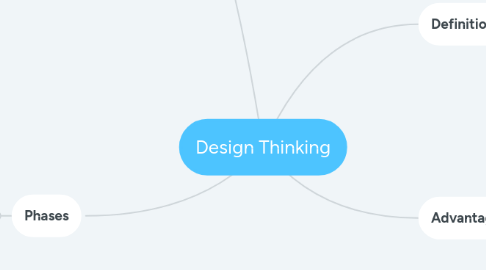
1. Applications
1.1. Basically everywhere
1.1.1. business
1.1.2. government
1.1.3. education
1.1.4. non-profit
1.1.5. society
1.1.6. personal
2. Phases
2.1. Frame a Question
2.1.1. to inspire others or yourself to search for creative solutions
2.1.2. turn problems into questions
2.1.3. resist the urge to find a solution right away
2.1.4. to get closer to the root of the challenge
2.2. Gather Inspiration
2.2.1. to discover what people really need
2.2.2. research about target customer(s)
2.2.2.1. immersive empathy
2.2.2.2. observation
2.2.2.3. interviewing
2.2.2.4. exploring extreme users
2.2.3. research methods
2.2.3.1. generative research
2.2.3.2. evaluative research
2.2.3.3. validating research
2.3. Generate Ideas
2.3.1. to push past obvious solutions
2.3.2. to generate breakthrough and original ideas
2.4. Make Ideas Tangible
2.4.1. to build rough prototypes
2.4.1.1. sketches
2.4.1.2. mockups
2.4.2. to make ideas better and more concrete
2.5. Test to Learn
2.5.1. to refine ideas
2.5.2. to gather feedback
2.5.3. to experiment
2.6. Share the Story
2.6.1. the end result
2.6.2. call for action
3. Definition
3.1. process for creative problem solving
3.2. human-centered
3.2.1. "What's the human need behind it?"
3.3. balance of
3.3.1. desirability
3.3.2. technological feasibility
3.3.3. economical viability
